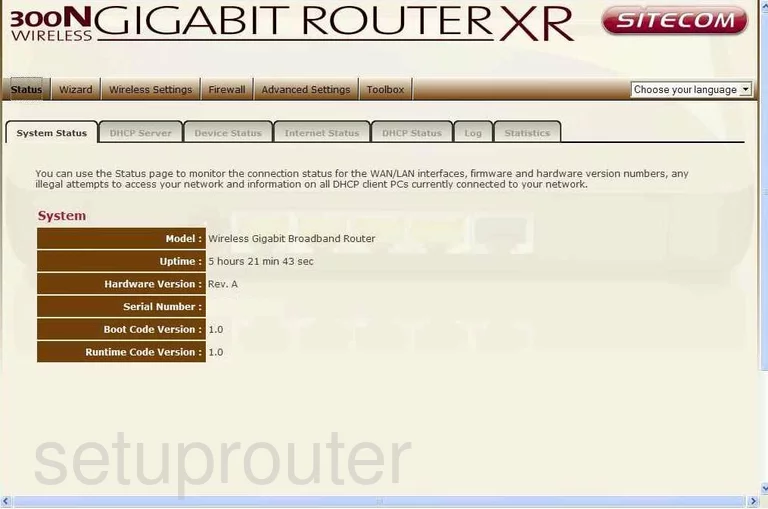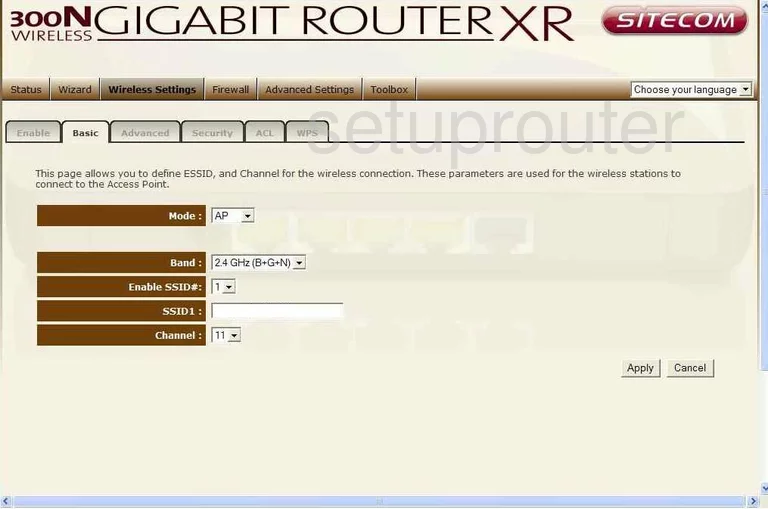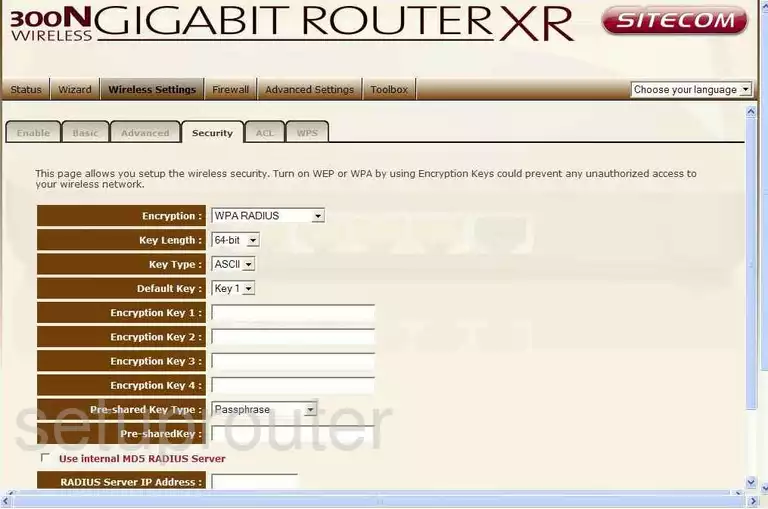The Sitecom WL-306 router is considered a wireless router because it offers WiFi connectivity. WiFi, or simply wireless, allows you to connect various devices to your router, such as wireless printers, smart televisions, and WiFi enabled smartphones.
Other Sitecom WL-306 Guides
This is the wifi guide for the Sitecom WL-306. We also have the following guides for the same router:
- Sitecom WL-306 - How to change the IP Address on a Sitecom WL-306 router
- Sitecom WL-306 - Sitecom WL-306 User Manual
- Sitecom WL-306 - Sitecom WL-306 Login Instructions
- Sitecom WL-306 - Information About the Sitecom WL-306 Router
- Sitecom WL-306 - Sitecom WL-306 Screenshots
- Sitecom WL-306 - Reset the Sitecom WL-306
WiFi Terms
Before we get started there is a little bit of background info that you should be familiar with.
Wireless Name
Your wireless network needs to have a name to uniquely identify it from other wireless networks. If you are not sure what this means we have a guide explaining what a wireless name is that you can read for more information.
Wireless Password
An important part of securing your wireless network is choosing a strong password.
Wireless Channel
Picking a WiFi channel is not always a simple task. Be sure to read about WiFi channels before making the choice.
Encryption
You should almost definitely pick WPA2 for your networks encryption. If you are unsure, be sure to read our WEP vs WPA guide first.
Login To The Sitecom WL-306
To get started configuring the Sitecom WL-306 WiFi settings you need to login to your router. If you are already logged in you can skip this step.
To login to the Sitecom WL-306, follow our Sitecom WL-306 Login Guide.
Find the WiFi Settings on the Sitecom WL-306
If you followed our login guide above then you should see this screen.

This WiFi setup guide begins on the System Status page of the Sitecom WL-306 router. Click the link at the top of the page labeled Wireless Settings. Then below that in the center section of the page, click Basic.
Change the WiFi Settings on the Sitecom WL-306

First, use the Enable SSID# to choose the first available number. This is probably going to be 1.
Second, use the space titled SSID1 or SSID2 if you chose 2 above, to enter a new name for your network. This name will identify your network and should be unique. It doesn't matter what you enter here but we recommend avoiding personal information. Check out this guide for more information.
The third setting that you may want to change is the Channel. This is the wireless frequency that you transmit your data on. We recommend using channels 1,6, or 11. Check out this guide for more on the channels.
When you are finished making these changes, click the Apply button. Then go back to the top of the page and click Security.

Once on this new page, the first setting is the Encryption. Go ahead and choose the best security from this list. We recommend WPA pre-shared key.
When you choose WPA pre-shared key, some new choices appear. The first is called WPA Type. We recommend the choice of WPA2(AES). Learn why in our WEP vs. WPA Guide.
Next is the Pre-shared Key Type. This should be set to Passphrase.
The last setting labeled Pre-shared Key is really the internet password. This should be as strong as you can make it while still being fairly memorable. We recommend using at least 14 characters with a mix of letters, numbers, and symbols. More ideas for stronger passwords can be found in our password guide.
Once you have made all these changes, click the Apply button to save them.
That's it, you did it.
Possible Problems when Changing your WiFi Settings
After making these changes to your router you will almost definitely have to reconnect any previously connected devices. This is usually done at the device itself and not at your computer.
Other Sitecom WL-306 Info
Don't forget about our other Sitecom WL-306 info that you might be interested in.
This is the wifi guide for the Sitecom WL-306. We also have the following guides for the same router:
- Sitecom WL-306 - How to change the IP Address on a Sitecom WL-306 router
- Sitecom WL-306 - Sitecom WL-306 User Manual
- Sitecom WL-306 - Sitecom WL-306 Login Instructions
- Sitecom WL-306 - Information About the Sitecom WL-306 Router
- Sitecom WL-306 - Sitecom WL-306 Screenshots
- Sitecom WL-306 - Reset the Sitecom WL-306